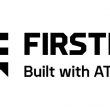MIMO’s future becomes less certain
Multiple input/multiple output, or MIMO, has long promised to increase data speed, range and reliability of wireless networks, but its widespread entrance into the commercial mobile wireless network community remains fuzzy.
That has implications for public safety, whose vendors have long desired to leverage wireless technology developed for the commercial sector to drive down costs and spur innovative applications.
Based on the concept of multi-antenna arrays deployed at both transmitter and receiver locations, MIMO takes advantage of a traditional weakness of wireless technology. It harnesses the once-unusable multi-path propagation that occurs in a single antenna transmission and uses it to create additional transmission channels within the same frequency.
When companies talk about MIMO in the modern sense, what they usually mean is a system with two antenna arrays at the transmission location and two antenna arrays inside the receiver, whether that is a modem, handset or other device. This translates to a doubling of bandwidth capacity and more efficient use of a single frequency. That spectrum efficiency is a boon for the public-safety community, which is angling for more spectrum for high-speed data services.
MIMO already is part of the latest version of Wi-Fi, known as 802.11n, which is designed to extend the speed and range of Wi-Fi to allow Ethernet-like wireless services that span several office floors, with less infrastructure and maintenance costs.
Ratification of 802.11n isn’t expected until this summer, but vendors aren’t waiting. They are offering products that tout the benefits of MIMO, most notably 100+ megabit speeds.
“The advantage we see in MIMO is the flexibility to address a bunch of different issues as we go,” said Bruce Gustafson, Nortel Networks’ director of marketing for carrier networks. “I can essentially double up the number of devices out there, only use one piece of spectrum and create huge amounts of incremental bandwidth. The application of MIMO, and the value of that, are dependent on what the goals of the operator are.”
The technology also creates multiple parallel independent channels from a base station to the mobile device and recognizes the unique signatures of these independent paths. Knowing the individual path signature allows them to be used as independent parallel highways, carrying much more data than a single link, without increasing network power. That also means fewer cell sites for operators.
At this point, however, MIMO looks to be a distant option for most of today’s commercial operators. “It’s not something of immediate focus,” said Verizon Wireless spokesman Tom Pica. “Our focus is on CDMA EV-DO technology. MIMO is just not a near-term interest or concern.”
Nearly the same sentiment is echoed by AT&T, formerly Cingular Wireless, the country’s largest mobile operator. “We are interested in MIMO but have no current plans to deploy it,” said AT&T spokesman Warner May. “MIMO can be used with UMTS/HSPA, and we might elect to deploy it before [long-term evolution, or LTE technology]. It will really depend on the market.”
Even in the next-generation of networks, known as 4G, which will be based on orthogonal frequency division multiple access (OFDMA) technology, MIMO’s entrance could be delayed. MIMO will be written into the LTE and ultra mobile broadband standards, but operators appear reluctant to adopt the antenna technology until necessary.
The Next Generation Mobile Networks (NGMN) Initiative, formed by a group of international mobile operators — including China Mobile, NTT DoCoMo in Japan and Vodafone in England — to influence the development of 4G networks, which could come as early as 2009, has voiced its reluctance to deploy MIMO, at least in the near-term. A recent white paper from the group reiterated its desire to achieve high performance without MIMO.
“Going to MIMO might be inevitable, but operators are going to try and postpone it as long as possible,” said Andy Fuertes, senior analyst with Visant Strategies.
Operators are concerned about cost. By some accounts, a MIMO base station is 30% more expensive than a typical mobile base station. It also potentially means putting up more hardware in towers that will increase tower rental fees.
Hank Menkes, chief technology officer of Alcatel-Lucent’s wireless business, said the concerns of operators are a bit overblown. “Talking about MIMO, you immediately form a picture of additional antennas,” he said. “It’s a knee-jerk reaction, but in some cases, the additional antennas are not even visible, so part of that is negative fantasy on the part of service providers. On the other hand, if you look at the need for interference mitigation, things like MIMO are necessary.”
OFDMA networks will hit the Shannon’s Law limit in terms of spectral efficiency, Menkes said. “The only way to improve the signal-to-noise ratio is through fundamental improvements to the modulation scheme through intelligent antennas,” he said.
In the interim, vendors are focusing on smart antenna solutions that can solve some of the capacity bottlenecks in today’s networks. For instance, Alcatel-Lucent is focused on introducing beam forming intelligent antenna solutions for carriers using CDMA 1x networks that allow up to twice as much voice capacity as existing 1x architectures. The intelligent antenna processing technology is included in the vendor’s CDMA Modular Cell 4.0 base station architecture and allows adjustments for greater voice capacity on 2G, 3G or next-generation networks on a per-user basis, without requiring investment in more spectrum, according to Mike Iandolo, president of Alcatel-Lucent’s CDMA/EV-DO business.
With beam forming, the base station sends a separate, dedicated, narrower beam to each active user, which adaptively follows them as they move through the base station’s coverage area. However, Alcatel-Lucent’s intelligent antenna processing technique also is being used on the reverse link from the mobile device back to the base station, resulting in two-way capacity gains. The company said it is actively applying advanced antenna technologies such as beam forming and MIMO into all parts of its wireless access portfolio.
TenXC Wireless, a maker of intelligent radio frequency solutions, offers technology that incorporates adaptive beam forming, array antennas and multi-dimensional signal processing to actively reduce interference and optimize the wireless signal link between base stations and individual users and devices. The protocol-independent solution sits on a tower with little modification and is ideal for increasing capacity in high-traffic areas, said Ross Ernst, vice president of marketing for TenXC.
“Operators all have typical requirements for antenna solutions,” Ernst said. “They have to work with existing standards, have minimal equipment impact, and they have to work with equipment that is already out there. They can’t be expensive and require new equipment.”
As it stands now, MIMO would have to be written into existing 3G standards in order to be integrated into chipsets and mobile devices. The WiMAX standard, however, could bring MIMO to the forefront quicker, as MIMO should improve capacity of OFDMA networks by a factor of three on the low side, five on the high side.
MIMO is part of the WiMAX Forum’s Wave 2 certification round, which won’t leave the forum’s testing labs until the later half of the year — at the earliest. This is not good news for Sprint Nextel, which has aggressive plans to deploy WiMAX and is clamoring for Wave 2 equipment. Company spokesman John Polivka said Sprint Nextel hopes to have MIMO in place for its wider rollout of WiMAX in the second quarter of 2008.
Many WiMAX vendors — such as Alcatel-Lucent, Alvarion, Nortel Networks and Samsung — have submitted single input/single output (SISO) equipment to the forum for Wave 1 certification, saying their MIMO systems, while not ready yet, would be completed in time for Wave 2 certification this summer.
Nortel has aggressively moved to work with WiMAX chipset suppliers and device manufacturers to integrate MIMO. The technology’s inclusion in WiMAX could have much bearing on how quickly MIMO reaches other 4G networks.
“The economies of scale will go into WiMAX, and by the time 3G operators deploy OFDMA, they can take advantage of that,” said Richard Lowe, head of Nortel’s mobility and converged core networks group.

















